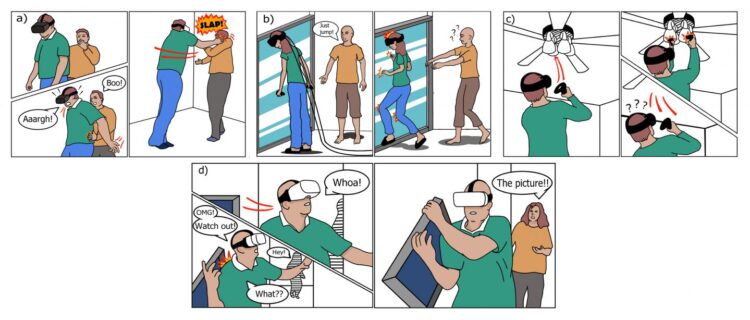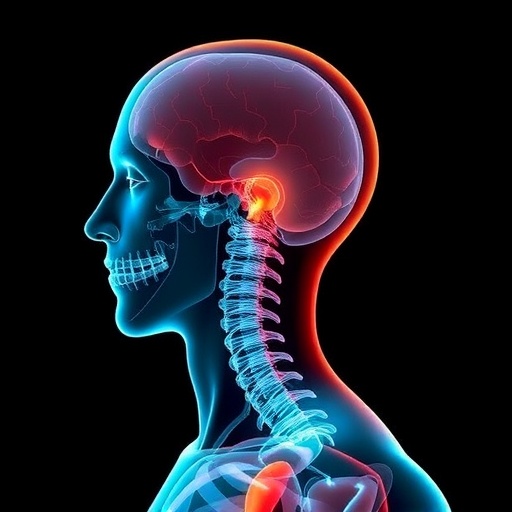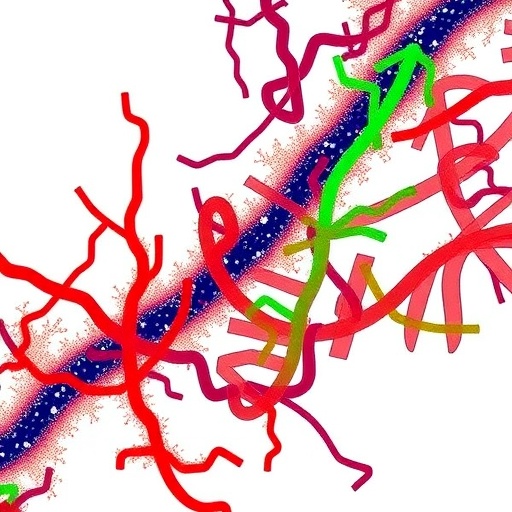YouTube is a treasure trove of virtual reality fails: users tripping, colliding into walls and smacking inanimate and animate objects. By investigating these “VR Fails” on YouTube, researchers at the University of Copenhagen have sought to learn more about when and why things go sideways for users and how to improve VR design and experiences so as to avoid accidents.
Millions of YouTube viewers have enjoyed hearty laughs watching others getting hurt using virtual reality – people wearing VR headsets, falling, screaming, crashing into walls and TV sets, or knocking spectators to the floor. Some of us have even been that failing someone. Now, videos of virtual reality mishaps, called “VR Fails”, have actually become a field of research.
Specifically, University of Copenhagen researchers who specialize in improving the relationship between computer technology and human beings studied 233 YouTube videos of VR fails. Their results have now been published in CHI Conference Proceedings.
For the most part, virtual reality remains the domain of gamers. But VR has become quite widespread in education, marketing and the experience industry and is increasingly popular in a variety of other sectors.
“As virtual reality has become cheaper and more common, the technology is being used in a host of environments that weren’t considered during its design. For example, VR is now used in people’s homes, which are often cluttered and populated by people and pets that move around. We’ve taken a closer look at where things go wrong for people so as to optimize user experience,” explains PhD Fellow Andreea-Anamaria Muresan of the University of Copenhagen’s Department of Computer Science, one of the study’s authors.
Throwing slaps
Based upon the 233 different video clips, the researchers created a catalogue of, among other things, various types of fails, accidents and their causes.
“One of the recurrent accident types is when VR users hit walls, furniture or spectators. In one case, we saw a spectator tickling the person wearing the VR headset. This resulted in the VR user turning around and slapping the spectator,” says Andreea-Anamaria Muresan.
Fear is the most frequent reason for fails or accidents: users get scared of a development in their virtual universe, such as a roller coaster ride or objects rushing towards them. Fear manifests itself in exaggerated reactions, in the form of shouting and screaming or wild, uncontrolled movements in which users begin to lash out with their arms and legs. This often results in falls and collisions when, for example, a user tries to escape from a virtual situation and ends up running head first into a solid wall.
New ideas for designers
Andreea-Anamaria Muresan and her fellow researchers now have a number of suggestions for how to prevent some of these accidents.
“Some VR games are designed to frighten players or give them jolts of adrenaline – which is part of what makes them fun to play. But in many cases, this isn’t the intention. So one has to find a balance. Because users get hurt from time to time and equipment can be destroyed, some people might lose their interest in using the technology. We seek to prevent this,” says Andreea-Anamaria Muresan, who elaborates:
“We can now provide designers with ideas about what they can do differently to avoid accidents. For example, collisions can be avoided by changing some of the game elements. Instead of a player being outfitted with a sword that requires large swings of the arms, their equipment can be substituted with a shield. This changes a player’s behavior.”
The researchers will now try to implement some of their design proposals in VR game prototypes.
###
WATCH SOME OF THE VIDEO CLIPS ON YOUTUBE:
https:/
https:/
ABOUT THE STUDY:
The authors of the study are Emily Dao, Monash University, Australia; Andreea-Anamaria Muresan and Kasper Hornbæk from the Department of Computer Science, University of Copenhagen and Jarrod Knibbe, University of Melbourne, Australia.
The research article has been included in the CHI 2021 conference and published in CHI Conference Proceedings.
Media Contact
Andreea-Anamaria Muresan
[email protected]
Original Source
https:/
Related Journal Article
http://dx.





